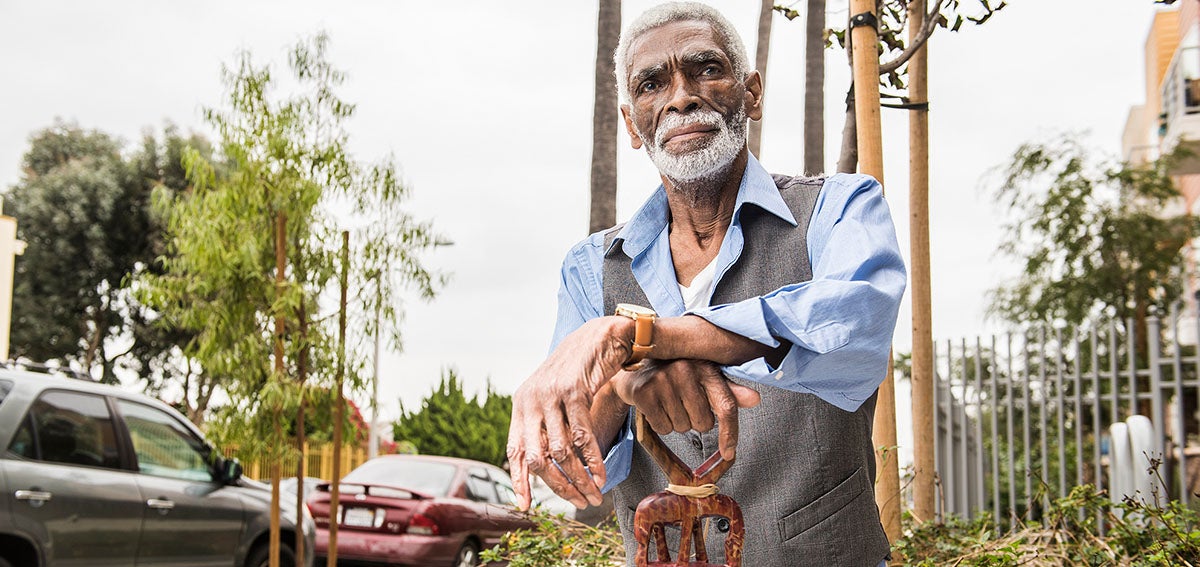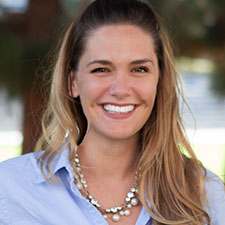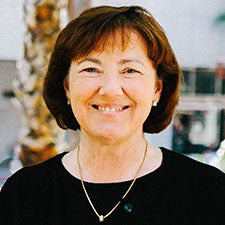
One might think dual enrollment in Medicare and Medi-Cal should provide relief from health coverage worries, but many of the 1.4 million Californians with low incomes enrolled in both programs find it as much a struggle as a help.
The two systems don’t always mesh. They have different criteria for services and different bureaucracies. Sometimes there are overlaps in benefits, sometimes there are gaps, and there are seemingly endless paperwork and people to deal with.
To Learn More About Dual-Eligible Enrollees
A Primer on Dual-Eligible Californians: How People Enrolled in Both Medicare and Medi-Cal Receive Their Care provides a comprehensive overview of the characteristics of the dual-eligible enrollee population in California and the current structures for administration and delivery of services, including the complex array of options that vary depending on needed services and geographic region.
That has been the experience of Chris Austin (not his real name), a charming 73-year-old Black man born in Barbados and raised in England before immigrating to the US. In his modest apartment in Los Angeles, he struggles to get the services he needs as he navigates the two confusing health care programs.
Austin came to America 47 years ago for adventure, and he’s had his share — dabbling in radio, hosting Caribbean music shows, and developing a career as a haberdasher. For seven years he worked as a wardrobe manager for The Jeffersons, a hit television show of the 1970s and 1980s. Mostly he made his living selling men’s suits, and it’s easy to imagine that he was good at it.
These days Austin is struggling. He has chronic obstructive pulmonary disease (COPD) and uses oxygen at home. His weight has dropped steadily over the last three years. He was hospitalized several times at the beginning of the pandemic and is mindful that he is especially vulnerable to COVID-19.
He finds cooking difficult and has trouble keeping his apartment clean. He would love to have more social connections, but most of his friends are gone or live too far away for that. Managing oxygen therapy and juggling medications are big challenges for him. The oxygen tank he depends on when he leaves the house weighs about 10 pounds and is hard to handle. “I’m not a big chap,” Austin said. “Sometimes it wears me out more than it really helps me.”
Managing his prescription drugs is a struggle. It’s increasingly hard to remember all the details about his medications. “The literature that comes with the medicine is too much for one person to just sit down and go over,” he said. “By the time you get through half of it, you forgot what you read at the top of the page!”
Recently the picture brightened a bit when several nonprofit agencies helped him get a home health aide, and he began receiving weekly visits from a nurse. Although Austin was entitled to those services, it took outside advocates to obtain them for him.
Money is a continual worry. A small pension and Social Security benefit are his only income, which is why Austin qualifies for Medi-Cal, the state Medicaid program for people with low incomes, as well as the federal Medicare program, which covers most people over 65. As a dual-eligible enrollee, his medical care should be almost free. Yet because of administrative errors, he has accumulated a pile of bills from recent hospitalizations. This year, he faced a surprise bill after a hospital “offered him a ride” home without telling him it wasn’t covered by Medicare. It was one of several bills he received totaling more than $2,000.
Like most people, Austin wants to continue to live independently. “I don’t want to go into a nursing home,” he said. “Especially after seeing how they’ve treated those people in some of the nursing homes in California during COVID. That’s a shame to do people like that.”
Recently the picture brightened a bit. Austin reached out to the Center for Health Care Rights for help with an envelope full of medical bills. Another advocacy agency intervened with Medi-Cal case managers and helped him get a home health aide to assist him for 20 hours a week. He began receiving weekly visits from a nurse. That helped a lot, he said. Although Austin was entitled to those services, it took outside advocates to obtain them for him.
Bureaucratic Challenges
Medi-Cal and Medicare ought to work together for dual-eligible enrollees. Medicare covers hospitalizations, doctor visits, other medical services, and prescription drugs. Medi-Cal covers home and community-based services such as home health aides, nonemergency medical transportation, and other services. The paperwork, confusing benefits that don’t align, and general bureaucratic challenges can overwhelm the most diligent enrollees.
Austin, for example, tries to be meticulous in filing documents sent to him, but he has trouble keeping track of everyone he talks to. For example, he remembers speaking with someone — likely a discharge planner — at the end of a recent hospitalization, but he didn’t understand much of what she said. His Medi-Cal managed care plan wasn’t checking on him during the pandemic, and he didn’t know who to call for help.
California has been working toward delivering more coordinated, person-centered care for dual-eligible enrollees. Most recently, the state proposed CalAIM, an initiative that would offer a statewide option that pairs Medicare and Medi-Cal managed care plans with the goal of better coordinating the services of both. But COVID-19 put CalAIM on hold, postponing key changes for dual-eligible enrollees for at least two years.
Austin’s experiences illustrate the kind of changes that will be necessary to deliver the services that dual-eligible enrollees need. As we discuss more fully in our Primer on Dual-Eligible Californians, several elements are key to designing systems that are person-centered:
- Elevate equity to drive system changes. COVID-19 has brought racial inequities and health disparities into sharp focus. As California considers ways to improve care for dual-eligible enrollees, two-thirds of whom are people of color, it must apply a racial justice and health equity lens to this planning.
- Coordinate care. Austin needs a lighter oxygen tank, and he’s terrified of contracting COVID-19. But until he got help from an advocacy agency, no one from his Medi-Cal plan offered guidance. Care coordination is at the core of person-centered care. Many dual-eligible enrollees need assistance navigating their care at times, especially when a needed medical service like oxygen is covered differently by Medicare and Medi-Cal. Coordination is critical when enrollees move from a hospital to a skilled nursing facility or back home. Such coordination decreases the risk for hospital readmissions, which Austin experienced this year. This can be managed by providing continuity of care through in-home therapy, nurse visits, medication management, access to durable medical equipment, and more.
- Provide robust home and community-based nonmedical services. Shopping, cooking, and household chores are difficult for people like Austin, and isolation and loneliness can worsen their health. If he and other older adults are to stay out of nursing homes, the Medi-Cal/Medicare system must fill the gaps and support their daily needs.
- Ensure smooth transitions. When CalAIM is implemented, a high priority must be to ensure that enrollees do not experience disruptions in care. There were plenty of snags when seven counties entered a demonstration program called Cal MediConnect, to which Austin was passively enrolled. Disruptions that followed this change prompted him to disenroll. The Cal MediConnect experience offers vital lessons about the need for extensive computer-systems testing, comprehensive education of providers, and clear and consumer-tested communications.
- Establish an ombudsman office. Dual-eligible enrollees need an ombudsman program to help them when things go awry. Around the time he was hospitalized, Austin was knocked out of Medi-Cal, apparently because he failed to respond to a form. That’s when he started getting hospital bills that kept him up at night. An ombudsman program like that created for the Cal MediConnect demonstration can help enrollees like Austin with specific problems and spot systemic issues that need to be resolved.
- Monitor the metrics. Collecting data on home and community-based services and who is getting them is critical to evaluating program success. Only transparency and accountability can ensure that programs deliver what they promise.
While the financing, administration, and delivery of services to dual-eligible enrollees are dizzyingly complex, these systems can and must do better to help people like Chris Austin. As policymakers and stakeholders revisit approaches for providing care to this population, they should keep in mind his simple, plaintive request for person-centered care.
“I just need help with things,” he said.
Independent journalist Rob Waters contributed to this article.
Authors & Contributors

Amber Christ
Amber Christ serves as the directing attorney of the health team of Justice in Aging. She develops and implements projects and initiatives that improve access to health care and long-term services and supports for people around the country who are dually eligible for Medicare and Medicaid. Amber is a leading expert on California’s Coordinated Care Initiative and the Cal MediConnect demonstration.

Georgia Burke
Georgia Burke is a directing attorney on the health team of Justice in Aging. She focuses her advocacy on issues affecting people who are dually eligible for Medicare and Medicaid benefits and is part of Justice in Aging’s leadership team working at the national and state level around the CMS Medicare-Medicaid Coordination Office demonstration projects.



